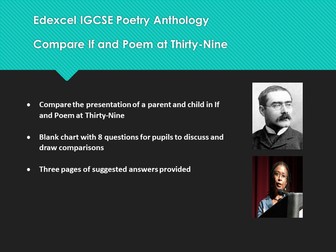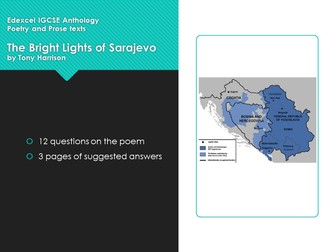Edexcel IGCSE non-fiction anthology: Workbook on ten texts with answers
<p>This 100 page Word document resource is aimed at pupils following Edexcel International GCSE English Language specification A. It focuses on preparation for question 4 of the Paper 1 examination on the ten non-fiction Anthology texts: The Danger of a Single Story; A Passage to Africa; The Explorer’s Daughter; Explorers or Boys Messing About; Between a Rock and a Hard Place; Young and Dyslexic; A Game of Polo with a Headless Goat; Beyond the Sky and the Earth: A Journey into Bhutan; H is for Hawk; Chinese Cinderella.</p>
<p>FOR A DETAILED PREVIEW, SEE THE FREE RESOURCE ‘THE DANGER OF A SINGLE STORY: WORKBOOK WITH ANSWERS’ WHICH IS THE FIRST CHAPTER OF THIS BOOKLET</p>
<p>The booklet can be used as a basis for teacher-led lessons, as a revision pack, or as self-study materials for pupils who have missed the teaching of the Anthology due to absence or starting courses late.</p>
<p>The study of each anthology text is divided into the following sections:</p>
<ol>
<li>Background and context: Brief details about the writer and the topic of the extract</li>
<li>Summary of the text: Summary of the main issues covered in the extract</li>
<li>Get started: Pre-reading activity to lead pupils into the text</li>
<li>Read the text: Instruction to read the whole text in the Anthology before starting the activities</li>
<li>Key vocabulary: List of vocabulary to aid understanding of the text</li>
<li>Analyse the language and structure of the text: Questions and activities to encourage analysis</li>
<li>Consolidate your understanding: Activity to highlight key points about language or structure</li>
<li>Answer a practice examination question: An exam-style question 4 with ten sentence starters</li>
</ol>
<p>Detailed suggested answers are given for sections 1-7 plus a simplified mark scheme for pupils to self-assess their Section 8 practice essays if working independently.</p>
<p>A glossary of ‘Language Features: Technical Terms’ is included at the end of the booklet and words in the booklet marked * are explained in this list with examples from the Anthology extracts.</p>
<p>The non-fiction extracts are NOT included in this booklet. Pupils should have their own copies of the EdExcel IGCSE English Anthology which is issued by the examination board.</p>




















